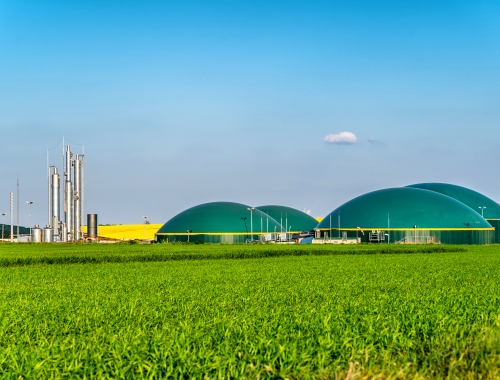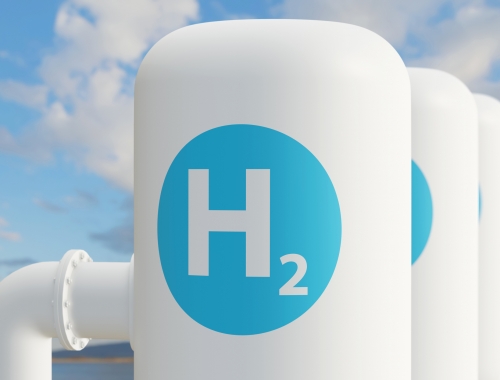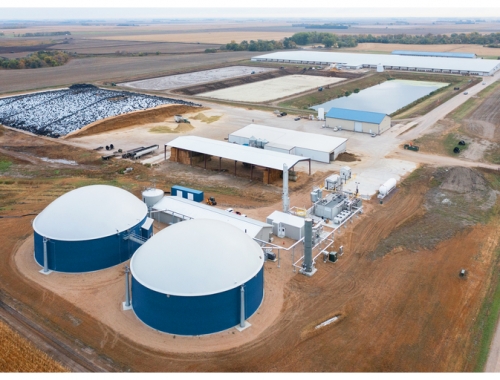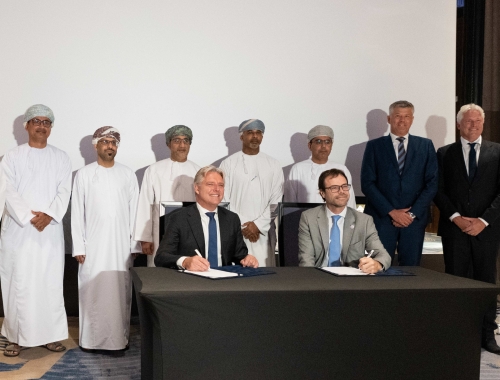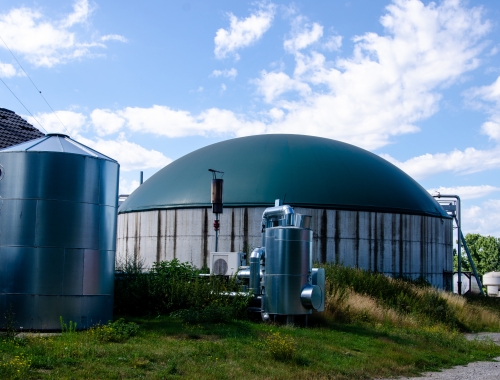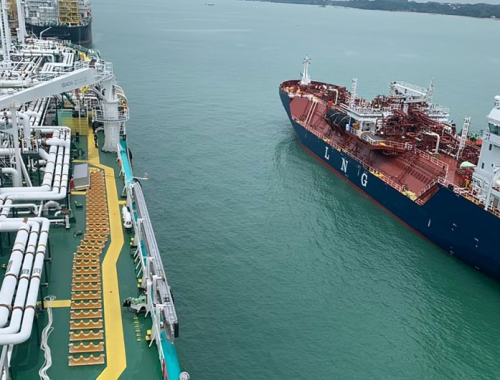Monolith: methane pyrolysis at commercial scale
SUMMARY
We interview Kelsey Roste, senior director of commercial development at Monolith, the only company in the world currently performing methane pyrolysis at a commercial scale to produce clean carbon black and hydrogen from natural gas. [image credit: Monolith]
By Mike WeberQ: Briefly tell us a little bit about Monolith and what it can offer oil and gas companies in their shift to a low-carbon future?
A: To answer the question, let me first provide a little background. Monolith was founded with the belief that technology will create the path to environmental transformation. Our company has pioneered the process of methane pyrolysis, which uses a custom-built reactor and clean electricity to convert natural gas or renewable natural gas into clean hydrogen and a solid carbon co-product, called carbon black. This versatile substance makes up a third of every vehicle tire, is used in plastic and rubber manufacturing, and can be used in conjunction with anodes or cathodes in Lithium-Ion Batteries.
Monolith is the only company in the world currently performing methane pyrolysis at a commercial scale. Oil & gas companies planning their decarbonised futures can look to Monolith’s technology to produce two environmentally friendly, valuable products, clean hydrogen, and clean carbon black. This process is conducted without the need for carbon capture and sequestration.
It is important to note that Monolith’s clean hydrogen will have a carbon intensity below 0.45 kg of Coe2 / MJ, with the ability to be further lowered with the utilisation of renewable natural gas.

Kelsey Roste, senior director of commercial development at Monolith
Q: The process of producing turquoise hydrogen through methane pyrolysis is a relatively new technological development. Tell us briefly how your production facility carries this process out?
A: The first patents for methane pyrolysis technology date back to 1920, so this technology is more than a century in the making. Since 2012, Monolith has been innovating to make methane pyrolysis viable at a commercial scale.
That said, we prefer not to think about hydrogen in terms of colour. Colour designations are vague and open to interpretation. Instead, we think in terms of carbon intensity, as noted in the question above. Because we use intense heat (>1,100 C) derived from clean electricity and don’t combust our natural gas feedstock, we don’t create CO2, SOx or NOx like the traditional processes to make hydrogen and carbon black. When we add renewable natural gas to our feedstock, we can control carbon intensity, going so far as to produce carbon neutral or carbon negative hydrogen and carbon black.
Q: When innovative processes are introduced, they typically face a cost hurdle that prevents their wider adoption. How close are we to developing at scale low emission turquoise hydrogen that can be cost competitive with other energy sources?
A: Through more than 12 years of trial-and-error, growth, and innovation, Monolith has already proven that methane pyrolysis can be commercially viable. Because our hydrogen production process creates valuable co-products, clean carbon black and hydrogen, we can keep our entire process cost competitive, opening the door to exciting possibilities.
Q: What’s the biggest obstacle now facing the turquoise hydrogen sector and how are you working to clear this barrier?
A: Because the clean hydrogen production industry is so new, it’s difficult to single out one challenge facing the industry currently. In fact, many of the challenges Monolith currently faces are the same as any other technology development company.
To alleviate some of these challenges, we have received tremendous support from our federal partners in Washington, DC. This includes a conditional loan from the Department of Energy Loan Program Office for our upcoming Olive Creek 2 expansion, additional opportunities to compete for grant funding, and the upcoming guidance on the Hydrogen Production Tax Credit. We are proud of the work we have accomplished so far but recognize that in order for the hydrogen industry to lead the way in North America’s energy transition, it’s going to take strong public-private partnerships.
Q: In Nebraska, where you are located, a regional hydrogen hub is planned. How important are the development of hubs in order to create a network for turquoise hydrogen producers and consumers?
A: We received a lot of support from the State of Nebraska including in their leadership applying for a Hydrogen Hub designation. If anything, this program has galvanised Nebraska’s growing clean energy industry and has spurred additional collaboration and innovation. The hydrogen hub program is important for the growth of the entire industry. We also believe that continued focus should be placed on decarbonizing additional difficult-to-abate sectors, like agriculture. That’s why we plan to turn the hydrogen we produce at Olive Creek 2 into clean ammonia, primarily for fertiliser in the agricultural market.
Our company is proudly located in the heart of the U.S. Corn Belt, so we understand the opportunity that lies ahead for the entire agricultural value chain – from small farms to large, multinational operations. The United States can demonstrate to the world that agriculture can provide sustenance in an environmentally friendly way.
Q: Inevitably with any new innovative process there will be critics that doubt that it can play a bigger role? What do say to the sceptics that will argue that it is a pipe dream that turquoise hydrogen will become a mainstream solution to climate change?
A: I encourage sceptics to look to the financial backing and customer partnerships Monolith has created, especially recently. The loan guarantee from the US Department of Energy Loan Programs Office was a thorough multi-year due diligence process spanning Republican and Democrat administrations. We were evaluated with equal rigour by TPG Rise Climate and Decarbonization Partners (Blackrock) before their significant investment in the summer of 2022.
Finally, I would point them to the collaboration agreements and product announcements we’ve made over the last few years with the Goodyear Tire & Rubber Company. These organisations will not put their investment funds, product performance or brand reputations on the line without first satisfying their scepticism.
Q: Finally, let’s discuss Monolith’s growth. How have you expanded over the years and what are your short-term and long-term goals?
A: Our company was founded in 2012 with the belief that you could build both a profitable company and create a cleaner world through technology. In 2017, Monolith’s technology was proven successful at our demonstration plant in Redwood, CA. In 2020, we commissioned Olive Creek 1, which is one of the largest commercial scale clean hydrogen production facilities in the world. Next year, we will begin constructing Olive Creek 2, in Hallam, NE. When online, Olive Creek 2 will be the largest clean carbon black and hydrogen plant in the world.
Q: What markets are you currently operating in and do you have plans to expand to any other regions?
A: Monolith is headquartered in Lincoln, NE, and boasts one of the industry’s premier carbon black labs (Monolith Technical Center). Olive Creek 1 is 30 miles south of the city in Hallam. We have a financial services office in Kansas City, Engineering in Denver, and Research and Development in California and Southern France. Following Olive Creek 2, we plan to continue to expand by building additional production facilities. Monolith’s successful technology paired with our ability to create next-generation, community sustaining jobs, means that we have had a lot of interest from various regions to host a future Monolith facility – so stay tuned.


